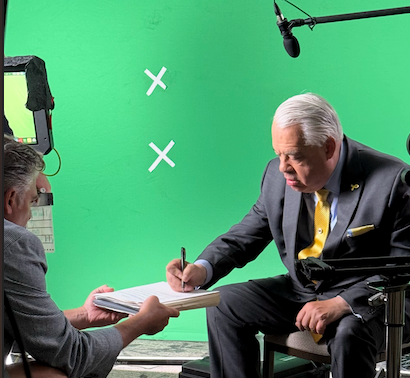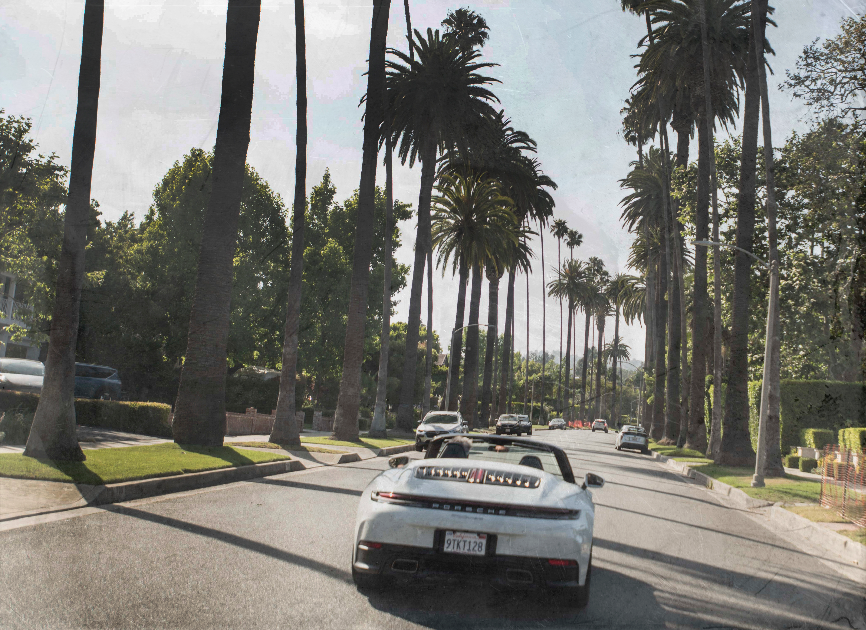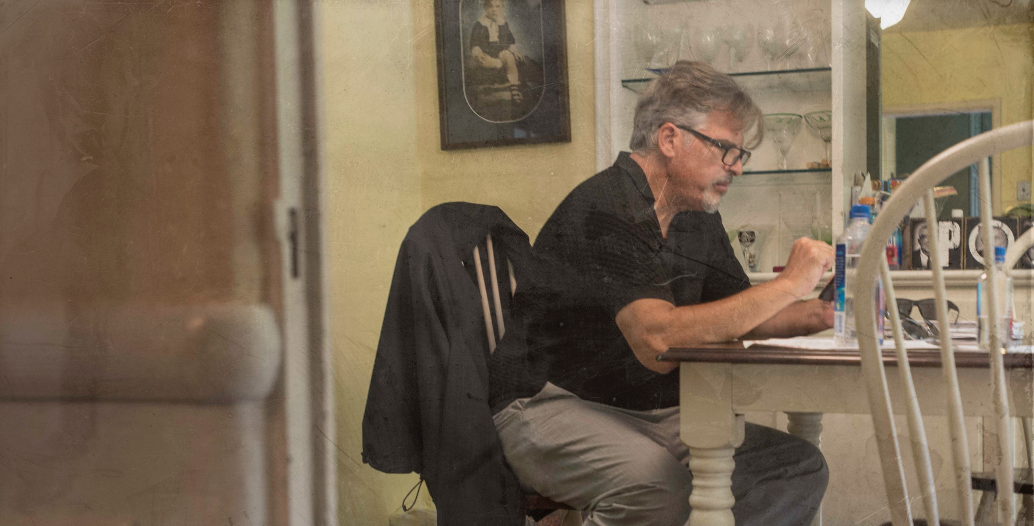
Robert Orlando's First-Person Statement on Making His American Spectator Documentary
When people ask me why I decided to make a documentary about The American Spectator, I usually tell them it started with a simple question: How does a magazine launched by a college kid in Indiana in 1967 end up influencing presidents, surviving multiple media apocalypses, and somehow making conservative intellectual discourse genuinely entertaining?
The truth is, after spending years documenting larger-than-life figures like Reagan, John Paul II, Patton, and Trump, I thought I understood the anatomy of influence. Then I met Bob Tyrrell, and realized I'd been studying the symptoms while missing the disease entirely.
The Accidental Anthropologist
As someone who's made everything from the mind-melting Moment In Time to The Divine Plan (which somehow managed to hit #1 at the box office—proving Americans will pay to watch anything if you promise them it involves both a pope and a president), I've learned that the best documentaries happen when you stop trying to prove a point and start trying to understand a mystery.
The American Spectator was definitely a mystery. Here was this scrappy conservative magazine that had somehow outlasted disco, survived the Clinton wars, and continued to punch above its weight class in an era when most publications have the staying power of a mayfly with attention deficit disorder.
So I did what any reasonable filmmaker would do: I inserted myself directly into the story. Not because I have an ego the size of Michael Moore's baseball cap, but because sometimes the only way to understand something truly bizarre is to experience it firsthand.
Embedded with the Enemy (or Friend—I'm Still Not Sure)
The process began with what I call "documentary embedding"—essentially moving into Bob Tyrrell's world and trying to figure out how his brain works. This involved spending considerable time in Washington D.C., surrounded by towers of books, manuscripts that could probably destabilize small governments, and enough conservative intellectual firepower to make William F. Buckley rise from the grave and demand a subscription.
What I discovered was that Bob isn't just the founder of a political magazine—he's something far more dangerous: a genuine intellectual maverick who somehow figured out how to make serious ideas accessible without dumbing them down. It's like watching someone perform brain surgery while juggling flaming torches and maintaining a running commentary on the state of modern comedy.
Beyond Left and Right, Into the Twilight Zone
As I've learned from making documentaries about everyone from ancient apostles to modern generals, the most interesting stories happen in the spaces between conventional categories. The American Spectator exists in one of those spaces—simultaneously conservative and contrarian, serious and satirical, establishment and outsider.
"The documentary world mirrors the fluidity of the battlefield," as I've written elsewhere, and this project required what I call "strategic narrative maneuvers." I couldn't approach this as a typical political documentary because The Spectatorisn't a typical political magazine. It's more like what would happen if The National Review had a baby with Mad Magazine and raised it on a steady diet of Hayek and Monty Python.
The Art of Intellectual Archaeology
My background includes everything from founding Nexus Media (where I help Fortune 100 companies figure out how to sound interesting) to making films that have screened at both the White House and the Vatican—which, let me tell you, is not an easy double booking to arrange. But this project required a different skill set: intellectual archaeology.
I found myself digging through decades of correspondence, policy papers, and what appeared to be several filing cabinets' worth of material that could probably get someone either elected to office or indicted by a grand jury. The deeper I dug, the more I realized that The Spectator hadn't just been commenting on history—it had been quietly helping to shape it.
The Tyrrell Factor
Bob Tyrrell himself turned out to be the perfect documentary subject: someone who takes ideas seriously but himself less so. He's passionate about intellectual rigor but allergic to pomposity. Watching him work is like observing a master class in what I call "serious unserionsness"—the ability to engage with weighty topics while maintaining enough perspective to recognize the absurdity inherent in most human endeavors.
During our interviews, I kept thinking about something I've learned from making films about historical figures: the most influential people are often the ones who seem least concerned with being influential. Bob has spent five decades building something significant while maintaining the demeanor of someone who's genuinely surprised anyone still cares about his opinions.
Documentary as Military Campaign
As I've written about documentary filmmaking, "time equates to money in filmmaking," and "shorter production schedules yield leaner budgets." But more importantly, certain stories demand immediate attention. The American Spectator represents something increasingly rare in our polarized age: institutional memory combined with intellectual independence.
"Seizing the essence of a story or moment necessitates rapid, strategic action," and this story felt urgent in ways I didn't initially understand. We're living through a moment when independent voices are being systematically marginalized, when institutional knowledge is being discarded, and when the art of serious public discourse is being replaced by Twitter feuds and cable news shouting matches.
The Bigger Picture
What started as a documentary about a conservative magazine became something larger: a meditation on how ideas move from the margins to the mainstream, how institutions survive cultural upheavals, and what happens when someone has the audacity to believe that serious intellectual discourse can coexist with genuine humor.
My films have always been about people who refuse to accept conventional limitations—whether it's Reagan and John Paul II deciding to end the Cold War, Patton insisting on inconvenient truths, or Trump turning politics into performance art. Bob Tyrrell fits perfectly into this gallery of magnificent obsessives: someone who had an idea, refused to give up on it, and somehow convinced the world to pay attention.
The Method to the Madness
The final documentary incorporates what I've learned from all my previous work: the visual storytelling techniques from Trump's Rosebud, the historical depth of The Divine Plan, the character study approach of Silence Patton, and the spiritual inquiry of The Shroud: Face to Face. But it also required developing new approaches to capture something that's part intellectual history, part media analysis, and part comedy special.
I filmed everything from editorial meetings to late-night conversations, from formal interviews with conservative luminaries to informal moments that revealed how this particular corner of American intellectual life actually functions. The result is something I hope feels both intimate and expansive—a personal journey that illuminates larger questions about how ideas, institutions, and influential personalities intersect in American culture.
The Final Cut
In the end, making this documentary taught me something I probably should have known from the beginning: the most interesting stories are often hiding in plain sight. The American Spectator has been shaping American conservative thought for over five decades, but somehow managing to do it with enough wit and self-awareness to avoid the fatal pomposity that kills most intellectual enterprises.
Whether you agree with the magazine's politics or not, there's something genuinely inspiring about Bob Tyrrell's stubborn commitment to the idea that serious discourse and genuine humor aren't mutually exclusive. In an age of ideological purity tests and performative outrage, that might be the most radical position of all.
As I put the finishing touches on this project from my studio in downtown Princeton, I keep thinking about something Bob told me during one of our interviews: "We set out to change the world and ended up creating pretty good entertainment instead. That's probably more than most people manage."
He's probably right. And if this documentary helps people understand how that particular bit of alchemy works, then maybe we've managed to create some pretty good entertainment ourselves.
Robert Orlando is a filmmaker, creative director and author based in Princeton, N.J. His latest works include "The Shroud: Face to Face" and the forthcoming documentary on The American Spectator. More information at robomantix.com.

"Inside the Making of a Cultural Odyssey."
A Filmmaker's Journey Into the Spectator Universe


Robert Orlando, B.F.A. (School of Visual Arts), M.T.S., Th.M. (Princeton Theological Seminary), is an award-winning filmmaker, author, and cultural theorist. His works — including The Divine Plan, Trump’s Rosebud, Silence Patton, The Shroud: Face to Face, and Karl Marx: The Divine Tragedy — explore how narrative, power, and culture collide across history. Orlando founded Nexus Media, dedicated to telling stories that challenge, provoke, and enlighten.











